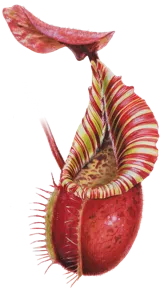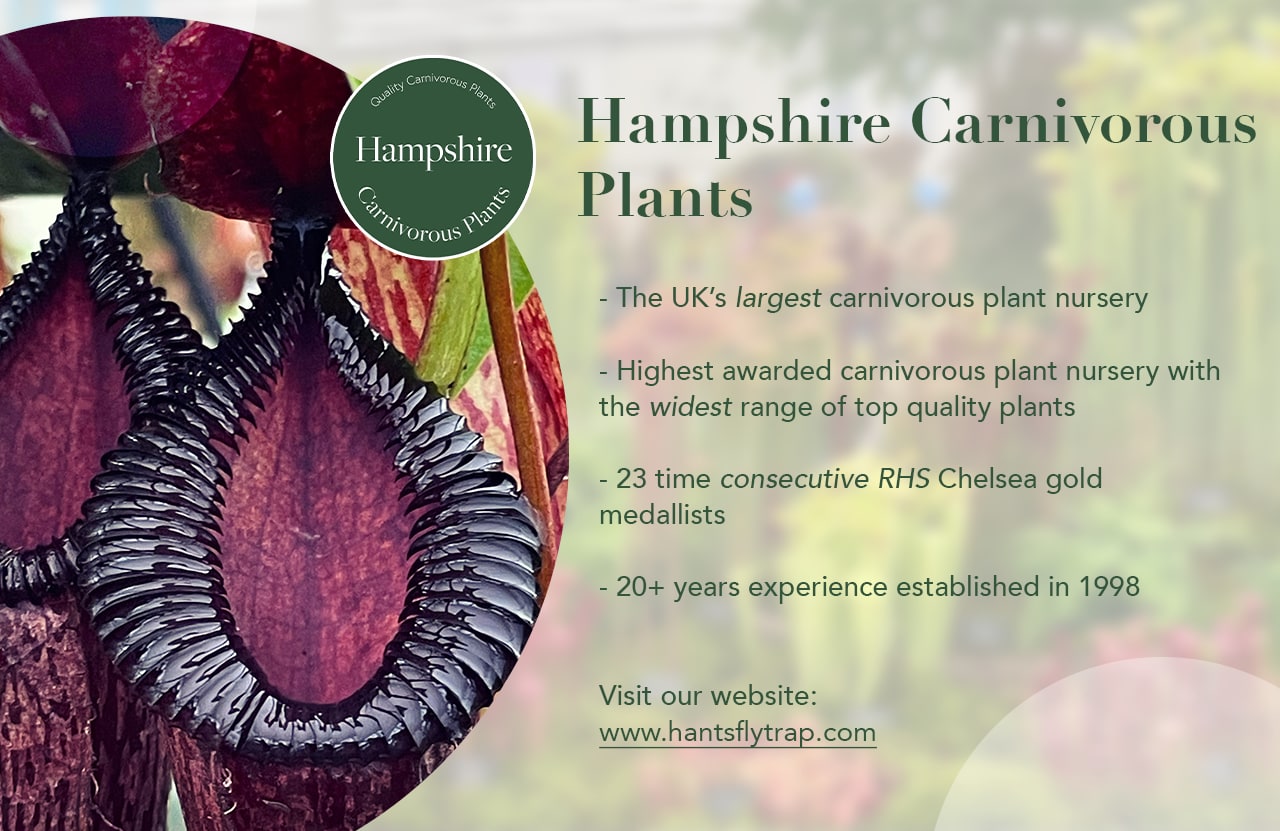Nepenthes peltata
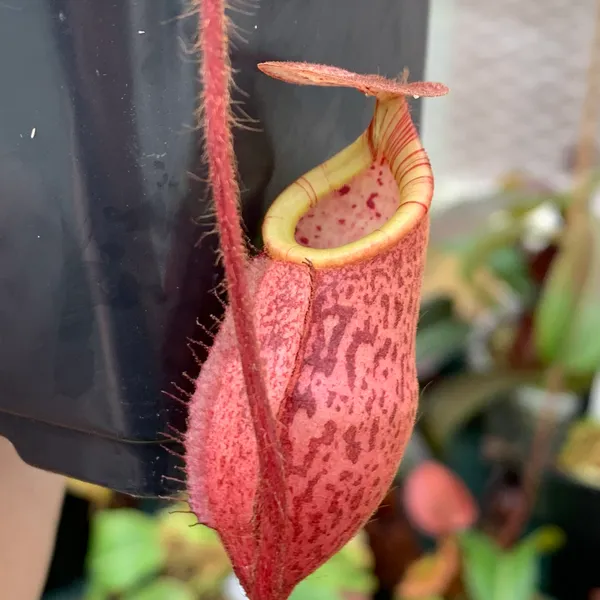 Hairy tendril and lovely red coloration on N. peltata
Hairy tendril and lovely red coloration on N. peltata 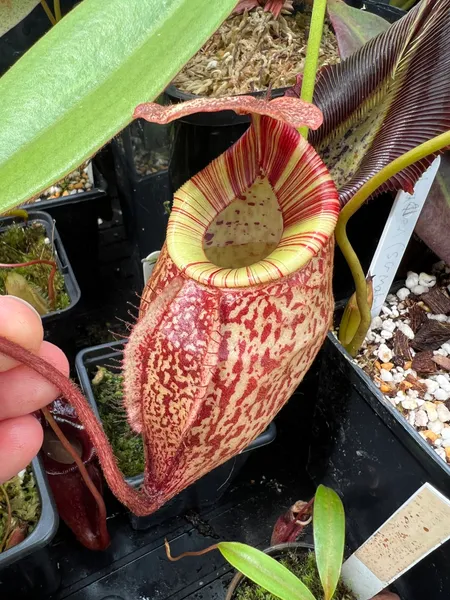 I also like how wide the peristome is on this individual
I also like how wide the peristome is on this individual 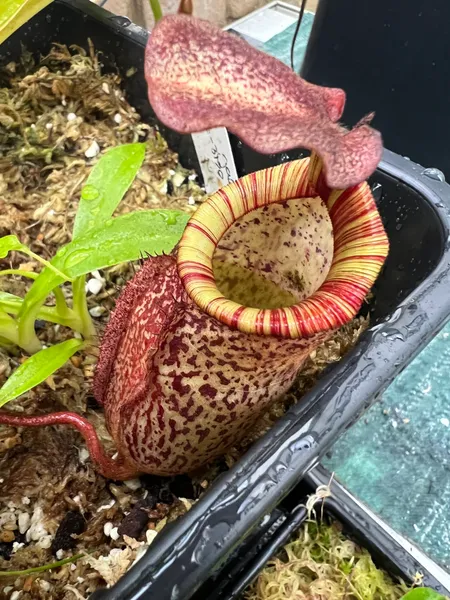 I have a suspicion that the pitchers inflate to be tubbier when they do so on - or submerged in - a bed of moss, rather than hanging
I have a suspicion that the pitchers inflate to be tubbier when they do so on - or submerged in - a bed of moss, rather than hanging 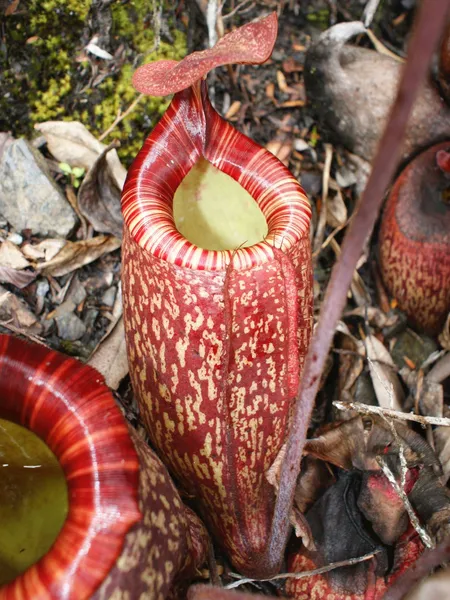 Lower pitcher, photographed in the wild by Andy Smith
Lower pitcher, photographed in the wild by Andy Smith 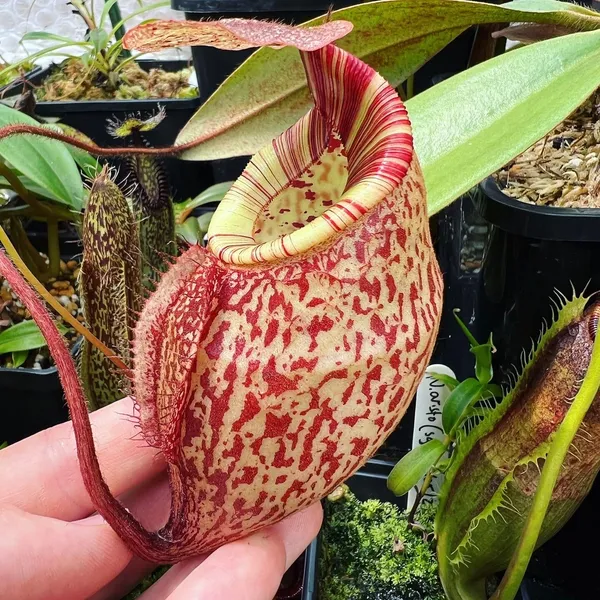 My seed-grown N. peltata has wonderful tubby pitchers and a boldly striped peristome
My seed-grown N. peltata has wonderful tubby pitchers and a boldly striped peristome 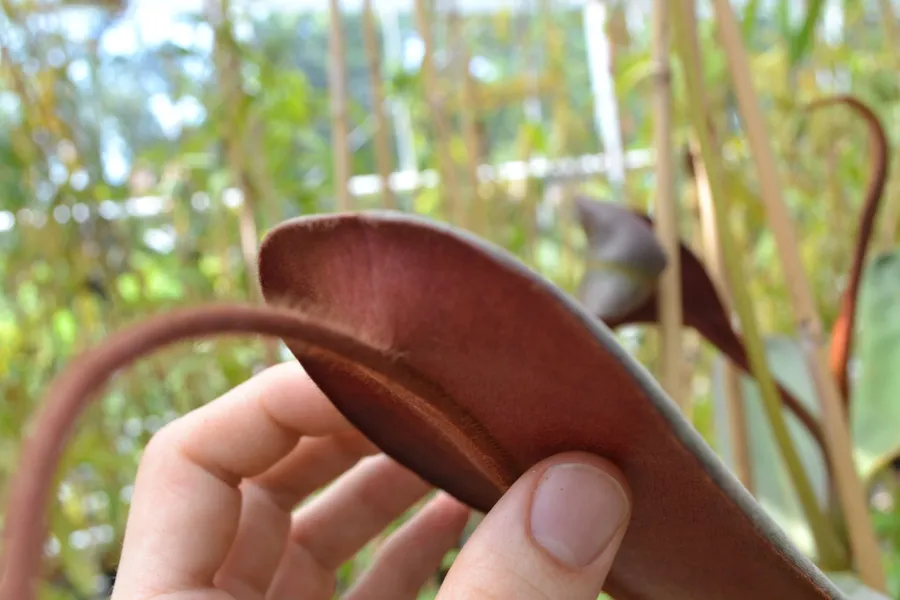 Note the red leaf underside, hairy tendril, and peltate insertion
Note the red leaf underside, hairy tendril, and peltate insertion 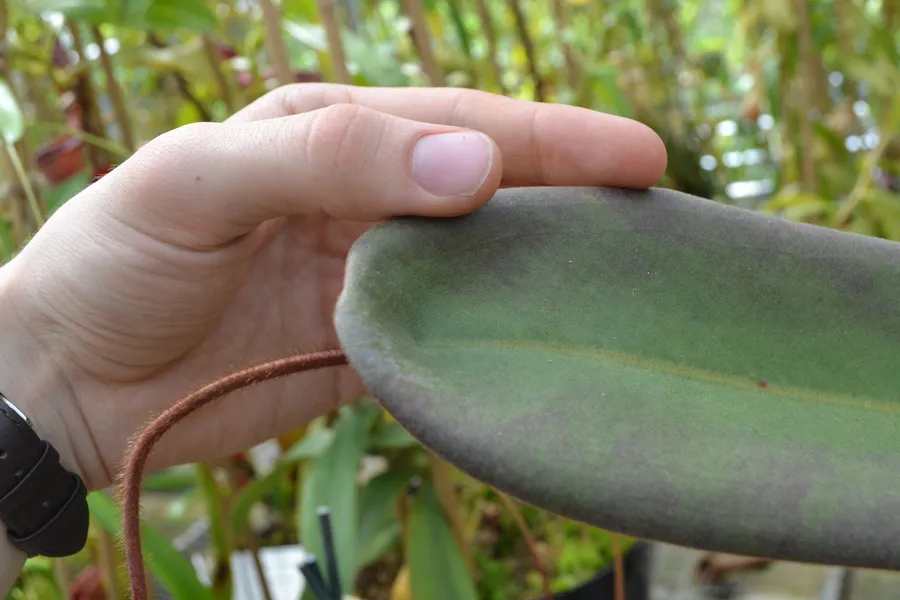 The peltate tendril insertion on N. peltata
The peltate tendril insertion on N. peltata Description & Care
Nepenthes peltata is a fascinating Philippine species found on Mount Hamiguitan on the island of Mindanao. It’s named for its peltate tendril insertion, meaning that unlike most species, the tendril holding the pitcher joins the underside of the leaf instead of the leaf tip. In this regard it’s similar to Nepenthes rajah and Nepenthes clipeata.
Other noteworthy characteristics include the thick indumentum of brown hairs which cover all parts of the plant, similar to N. mollis and N. veitchii. It’s a highly variable species, but many individuals exhibit highly squat pitchers with brightly striped peristomes. It’s also widely recognised among hobbyists for the bright red underside of its leaves, but this trait is not universal.
My fellow grower Francis Bauzon has written a detailed article on N. peltata, which I published on my blog back in 2019. That was before I started producing these shorter profiles of plants in my collection. Rather than repeating lots of what Francis wrote, I’ll instead direct you towards his brilliant article on Nepenthes peltata.
Since Francis wrote that article, there have been two main developments worth mentioning. First, Borneo Exotics replaced its single clone release (BE-3464) with a new release containing many different clones (BE-4025). Second, the hybrid N. peltata × villosa was produced in Japan and became highly sought-after in the hobby. These two species are very complementary of one another, with their squat pitchers and notable indumentum.
I have one N. peltata in my collection, which is from seed. It is an easy grower in my highland greenhouse, and continues to grow happily during summer. Given its low price, if you can provide highland or intermediate conditions for your plants, I’d highly recommend adding N. peltata your collection.
How I Grow It
| Media | Long fibre sphagnum moss, perlite, and - optionally - orchid bark (2:1:1). |
| Water | Damp but not wet. |
| Light | Very bright, diffused light - can take more than many other highlanders. |
| Fertiliser | Maxsea or liquid orchid feed in the pitchers, every two weeks. |
| Temperatures | Not too picky - I grow as a highlander with a min of 12°C year-round, but N. peltata grows happily as an intermediate. |
| Humidity | Needs good humidity (75%+) for pitcher production. |
Learn more about cultivation with my guide to growing Nepenthes.
Day & Night Temperatures
Nepenthes peltata is an intermediate species, found at elevations of between 865 and 1635 meters. This range is highlighted in orange above, and equates to temperatures of approximately 24 - 31°C during the day, and 14 - 21°C at night.
Habitat
| Native to | Philippines |
| IUCN Red List status | Least Concern |
| Natural hybrids | N. hamiguitanensis, N. justinae |
Buying N. peltata
| Availability | Widely available, primarily via Borneo Exotics. |
| Borneo Exotics codes |
|
| Recommended nursery | California Carnivores Hampshire Carnivorous Plants |
